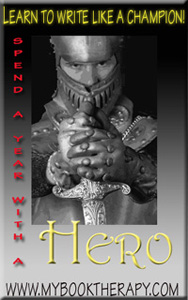...who can argue with
the magic of Connery and Ford as father and son...
I’ll never forget the first time
I met Indiana Jones in Raiders of the Lost Ark.
Fresh from the Stars, Han Solo—um, er, Indy was exactly my kind of
hero—a little bit arrogant, a little bit unassuming, a whole lotta
cute, and best of all, he was searching for the ark of the covenant. In
an age when most people still knew their Sunday school dogma, it was a
quest worth investing in. And the premise, keeping the most holy of
artifacts out of the hands of an evil empire—the Nazis—well, right
there the franchise became a classic.
But Indy two—remember it? I
didn’t think so. Sure, we all went, hoping for a continuation of the
fun from Raiders, but in the Temple of
Doom, what we got was a dark, mystical, creepy quest in the
Far East, where Indy suddenly begins to speak a different language when
muscled and sweaty priests try to rip his heart from his chest. I hated
it.
Thankfully, the franchise took
the clues and ended the trilogy with the formula that worked: Indy
going after the relics of our faith in the Last Crusade,
my personal favorite (who can argue with the magic of Connery and Ford
as father and son?).
Another hit, and it revived the
magic of the Indy Chronicles.
Fast forward a couple decades
and the old believers still love Indy. Yet, it’s time for a new guard.
So, Indy is revived, and still looking good, despite a few years on
him, enters the screen the same old arrogant, lip-curling rebel, this
time taking on the Russians. (And, as a gal who lived in Russia, I can
tell you that the accents are good!)
They bring Indy to the warehouse
to find some mummified remains, during which we experience the good old
Indy, battling his way out of danger through fast footwork and not a
little luck. Better, we even see the ark, a nod to the past for Raiders
fans.
We’re off to a great start with
Indy teaching at college, quickly followed by a great escapade, where
he meets his soon-to-be replacement, Shia LaBeouf, who of course has a
map and a mystery. Old fans and new settle back for a great new quest.
Until Indy and Jr. head to South
America . . . and the Indiana franchise reverts to the Temple
of Doom mode. Veering away from the Judeo-Christian history
of unearthing religious artifact, suddenly Indy’s entering the realm of
the mystical. Psychic powers and strange magnetic fields and visitors
from outer space.
The problem isn’t the subject
matter—it’s the promise. See, Indy made us a promise in the first movie
that he cared about the roots
|
And that’s when half the
audience begins to go out for popcorn.
of our society—particularly the
Judeo-Christian past. He proved that he’d save our beliefs from the
clutches of evil. And our forgiving him for the crazy adventure in the Temple
of Doom paid off in the Last Crusade.
However, now he’s got us chasing
after aliens who suck out brains through our eyeballs, and, well, we’re
not sure what to think.
I’m not against brain-sucking
aliens, mind you. If it were Mulder and Scully in the X-Files
sure, I’m game, because I know what to expect. They’re into visitors
and creepy things from other planets. And frankly, I’m a big Smallville
fan. But Indy, well, some of us in the old guard walked out of the
theater feeling a little betrayed.
Really, Indy, do you believe in
crystal-skulled aliens?
I know the producers were
probably buying into the alien/psychic–crazed culture, wanting to grab
an audience that could fall in love with Shia as Indy Junior. And I dig
that . . . in fact here’s my edit: What if Shia was the one who
believed . . . and Indy simply played along? Then at least Indy would
still be that guy who might just be a little like us, the people who
fell in love with him back in the day when church and pot-roast on
Sundays were still a way of life. Now, we’re not sure what to think of
Indy . . . has he lost his mind, whacked one too many times with his
bullwhip? Or did we never really know him?
The point is to remember your
audience and the value system of your hero from book to book. Because
you made a promise to your readers about what they can expect from your
hero, what he believes in, and what he’ll die for. And breaking that
promise could cost you your loyal fans.

|